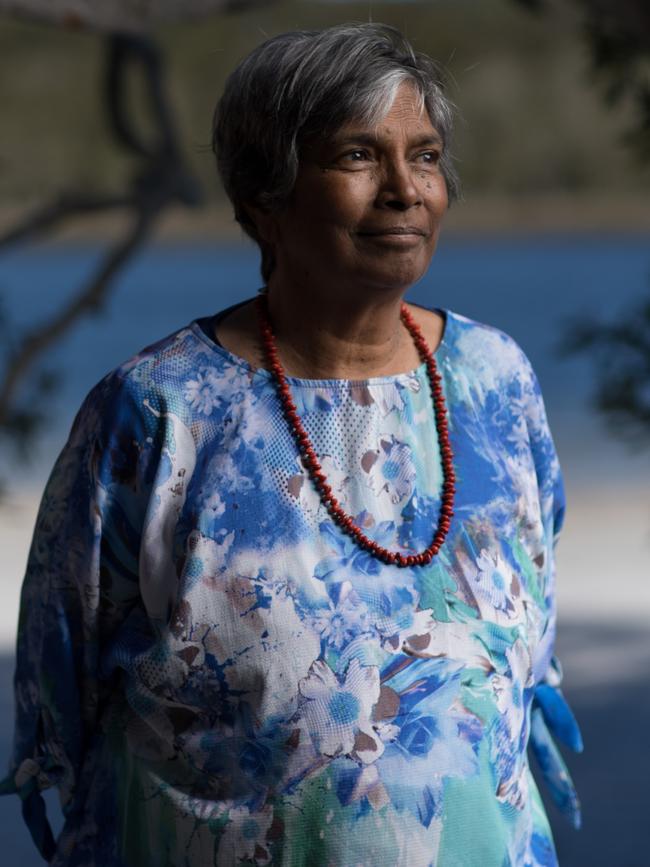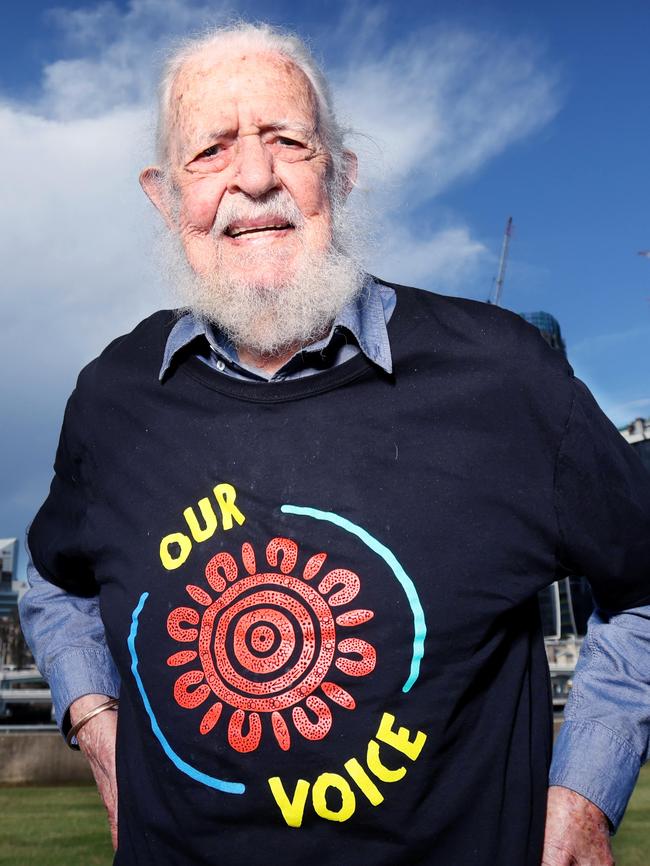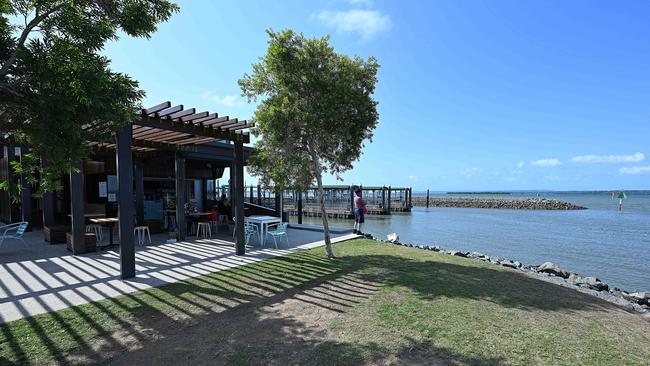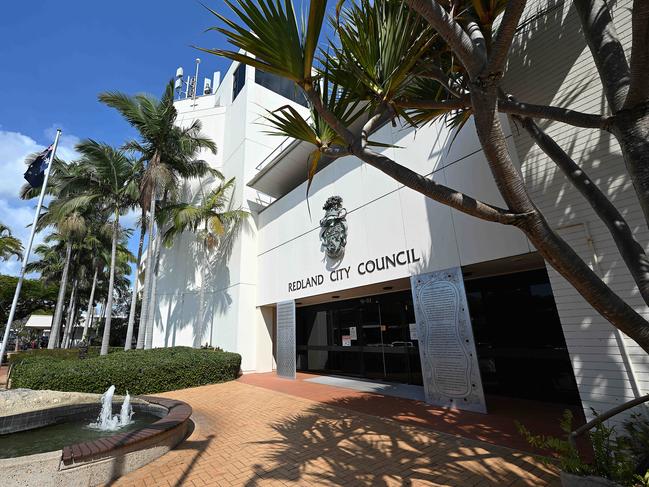Redlands native title claim targets 3500 sites across council area
Some 3500 sites over 530sq km of a southeast council area are subject to a native title claim that could rewrite national precedent. USE OUR INTERACTIVE MAP
QLD Politics
Don't miss out on the headlines from QLD Politics. Followed categories will be added to My News.
A major South East Queensland council faces a $210m fight to keep control of thousands of sites, including sporting club grounds and popular foreshore parklands, as a landmark native title claim heads towards a lengthy court showdown.
Some 3500 sites over 530sq km of the mainland Redlands Coast are subject to a native title claim by the Quandamooka people, in a case that could rewrite national precedent.
First lodged in May 2017 by elders Evelyn Parkin and Uncle Bob Anderson, the Quandamooka Coast claim covers areas including the popular Cleveland and Victoria Point foreshores, sporting club grounds, the Redlands Performing Arts Centre, council chambers and cemetery.
The Federal Court will later this year start considering whether the Indigenous applicants’ connection to country under the native title act exists, with compensation, exclusive and non-exclusive access rights possible compensation.
Such a claim over heavily developed and popular community sites is yet to be tested, with this case one that could set a precedent for others, a Redland City Council spokesman said.
“The Quandamooka Coast claim is one of the first to be made over a densely populated area with a European settlement history dating back to the 1800s,” he said.
A finding in favour of the applicants could see Indigenous Australians handed exclusive native title rights, the council spokesman said.
“This means they will have the right to possess, occupy and use an area to the exclusion of all others,” he said.
In areas where non-exclusive native title is determined, the Quandamooka applicants could be granted the right to live and camp, hunt, light fires and conduct cultural activities, including burials, on the land.
Native title over Minjerribah (North Stradbroke Island) and Mulgumpin (Moreton Island) was granted to the Quandamooka people in 2011 and 2019 respectively.
On Minjerribah, native title has led to concerns about widespread land clearing, a lack of transparency and public areas being fenced off from the council and non-Indigenous people.
Insiders fear parklands on the mainland will suffer the same fate if native title is determined, with the council effectively powerless.
Efforts to narrow the list of properties subject to the latest Quandamooka Coast native title claim broke down earlier this year when the applicants and Redland City Council, mediated and supported by the state government, failed to agree on a Consent Determination – a document agreeing what sites would be subject to the claim.
The fate of 3500 public parklands and council sites are now set to be determined at a Federal Court trial from November.


Redland City Council said its ratepayer-funded legal team was forensically analysing each of the sites, in some cases using records dating back to the 1800s, to determine whether they could be defended against the claim.
Redland City Council has declined to put a figure on the cost of the battle, but if the fate of all 3500 properties go to Federal Court trial it could reach up $210m.
“Council has continued to bear the substantial burden of identifying and documenting the historical title, ownership history and past works that may affect the native title status of the 3500 council owned or controlled lots … notwithstanding that the applicants receive financial assistance from the Commonwealth, who are not actively participating in the resolution of the claim,” the spokesman said.
While the council “remains hopeful” a Consent Determination could see the sites narrowed before the case heads to trial, frustrations remain with the Palaszczuk government’s lack of support during the previous 18 months of mediation – which failed to result in an agreed list of properties.
“It did not capture agreement regarding parcels on which native title does not exist,” the council spokesman said.
“It would lead … to all matters in controversy between the parties not being determined completely and finally and will result in multiple future proceedings.”

Resources Minister Scott Stewart, however, pinned the blame on the council.
“I expect all parties involved in any native title claims to work cooperatively during the court process,” he said.
“The process currently underway is a direct result of decisions made by Redland City Council.”
A spokeswoman for the Department of Resources said it was committed to resolving native title claims “by agreement wherever possible and avoiding costly and protracted court processes”.
Mr Stewart noted, as of June 30, Queensland resolved 177 claimant applications, with 92 per cent settled by agreement without going to trial.
There are 52 active native title claim across Queensland, according to the Australian National Native Title Tribunal.
Representatives from the Minjerribah and Mulgumpin body corporate, Quandamooka Yoolooburrabee Aboriginal Corporation, did not respond to a request for comment.
University of Queensland senior lecturer and native title expert Richard Martin said it remained difficult for Indigenous people to secure a successful native title determination.

“It is challenging in different ways for people to demonstrate the continuity which is required under the legislation … through intensive colonisation and dislocation of people from country,” he said.
However, Dr Martin said the legislation, driven by Prime Minister Paul Keating in 1992 and last amended in 2021, had stood the test of time.
“Thirty years of native title has shown the legislation is capable for recognising Indigenous peoples’ continuing attachment to places where we might assume that attachment has been lost or damaged,” he said.
“The wave of successful native claims we’ve seen in Queensland is often as a result of consent determinations, negotiations with respondents, they’ve contradicted the pessimistic attitude that was around about native title not being able to survive in closely settled areas.
“Native title has profoundly changed Australia as a nation, and I think decision such as the Noongar claim, which led to a significant settlement … have been very significant in changing people’s attitudes.”
The settlement between the Noongar people and the Western Australian government covering some 200,000 sqkm of the state’s southwest is regarded as the nation’s most comprehensive settlement.
NATIVE TITLE Q&A
WITH UNIVERSITY OF QLD’S RICHARD MARTIN
■Could I still access public land where exclusive Native Title rights exist?
It depends a bit on the detail. It is pretty hard to prove exclusive native title. Members of the public might be invited or permitted to enter exclusive native title land, or be taken there by an Indigenous business. Exclusive native title would also typically be subject to an agreement, called an ILUA, which would address practical things such as access to maintain infrastructure.
■Is my property at risk?
No. Native title strengthens the rights of other property holders by offering certainty.
■What does Native Title mean for Indigenous Australians?
Thirty years of native title has enabled Indigenous people’s traditional rights in land and waters to be recognised, respected and protected for generations to come. It has also supported the revival of traditional culture and connections to country and the restoration of pride in First Nations identities. I don’t think we’d see developments like the Voice to Parliament without the quiet revolution of land rights and native title. And it has helped non-Indigenous people better understand the history we all share.
■What happens when Native Title is determined?
It is the culmination of years of research and legal work including accessing remote places. For Indigenous people, it means a lot of effort to explain the complexities of their law and customs. A successful determination means that the Australian legal system has determined those traditional laws and customs survived colonisation more or less intact. It means that people can continue to practice those laws and customs and pass them along to their children, and get access to important sites on their country, like places where the Rainbow Dreaming rests.
■Will the Voice affect it?
If successful, the Voice will create an institution to represent the interests of Indigenous Australians, with new leaders. They may build on the leaders of land councils and native title corporations. Some Indigenous people are concerned about how the Voice will impact the existing system. It depends on how the Voice is structured.



